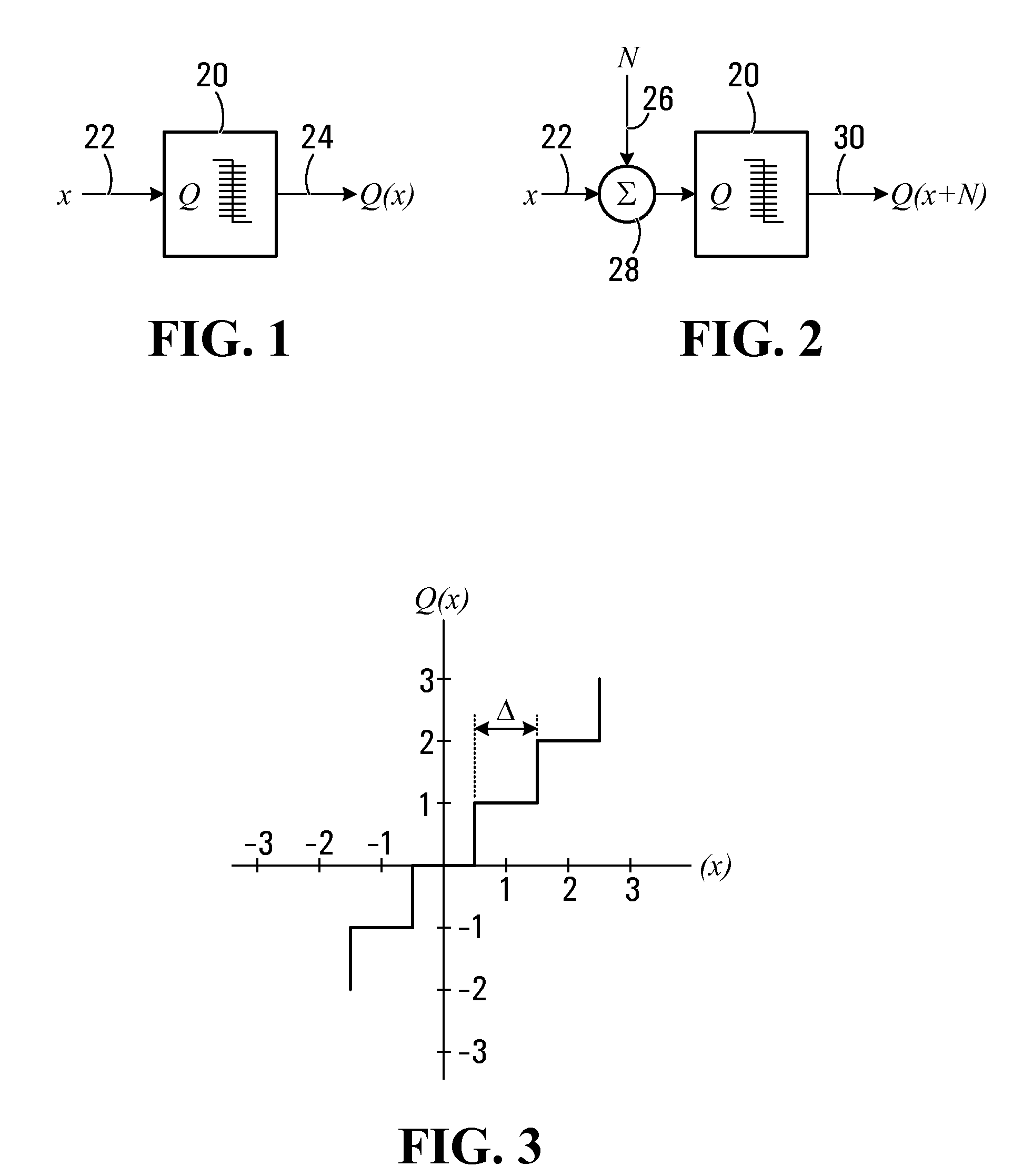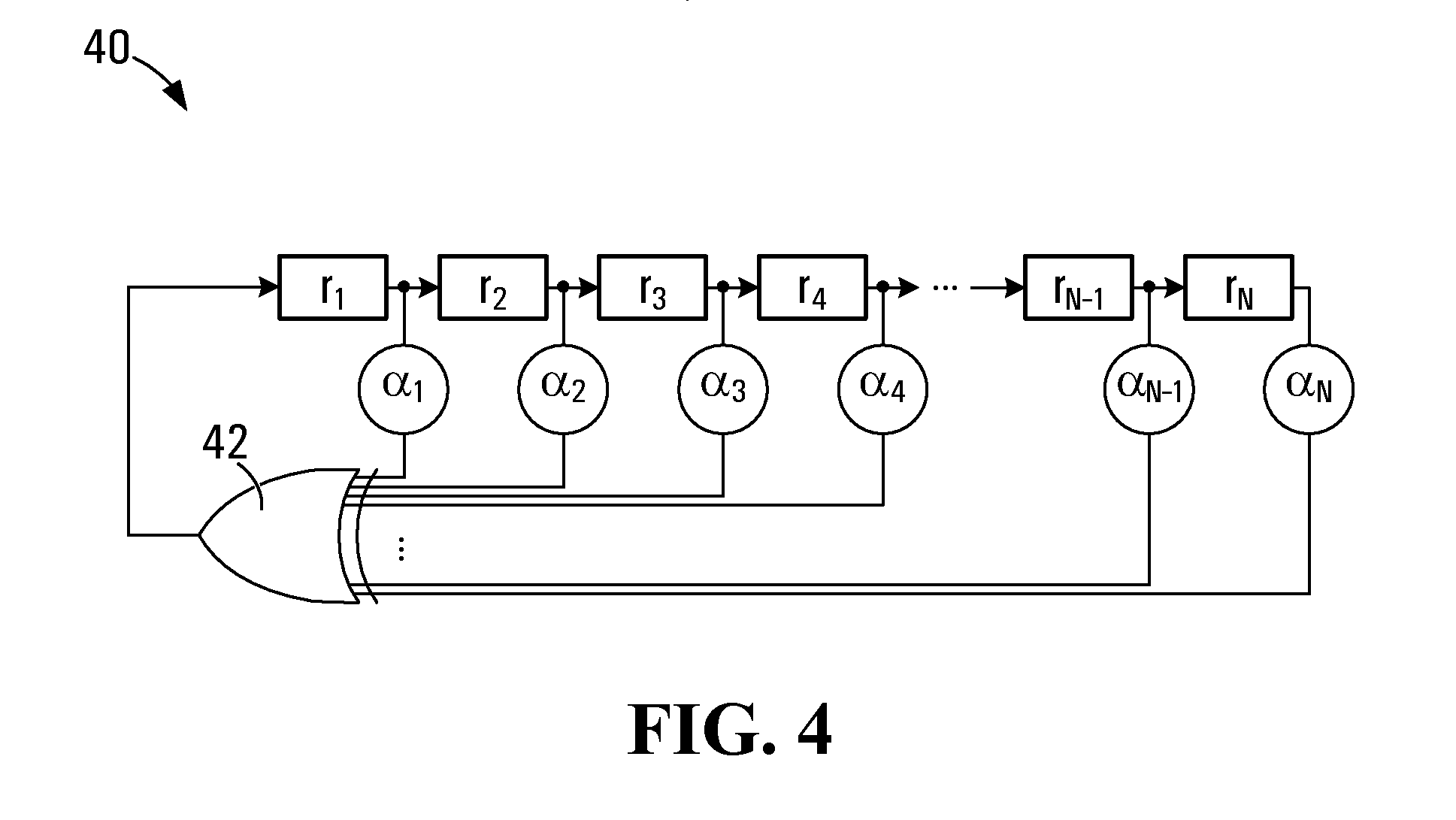High-pass dither generator and method
- Summary
- Abstract
- Description
- Claims
- Application Information
AI Technical Summary
Benefits of technology
Problems solved by technology
Method used
Image
Examples
Embodiment Construction
[0028]FIG. 1 illustrates a simplified block diagram of a conventional quantizer 20. Quantizer 20, denoted Q takes an input signal 22 (denoted x) and produces a quantized signal 24 (labeled Q(x)). The transfer characteristic of quantizer 20, which may be a common type of uniform quantizer, is shown in FIG. 3.
[0029]FIG. 2 illustrates a block diagram of quantizer 20 of FIG. 1 with a dither signal 26 (denoted N) added to input signal 22 prior to quantization. The output 30 of the quantizer 20 is Q(x+N). The dither signal N may be modeled as an additive random or pseudo-random process.
[0030]In many image and video processing applications, suitable dither signals are often uniformly distributed across the quantization step. This is because a uniformly distributed noise is more appealing to the eye than noise which is correlated to the input signal. For a uniformly distributed dither signal or noise, the probability density function (PDF) fN(n) of dither signal N may be defined as
fN(n)={1 / ...
PUM
 Login to View More
Login to View More Abstract
Description
Claims
Application Information
 Login to View More
Login to View More - R&D
- Intellectual Property
- Life Sciences
- Materials
- Tech Scout
- Unparalleled Data Quality
- Higher Quality Content
- 60% Fewer Hallucinations
Browse by: Latest US Patents, China's latest patents, Technical Efficacy Thesaurus, Application Domain, Technology Topic, Popular Technical Reports.
© 2025 PatSnap. All rights reserved.Legal|Privacy policy|Modern Slavery Act Transparency Statement|Sitemap|About US| Contact US: help@patsnap.com



